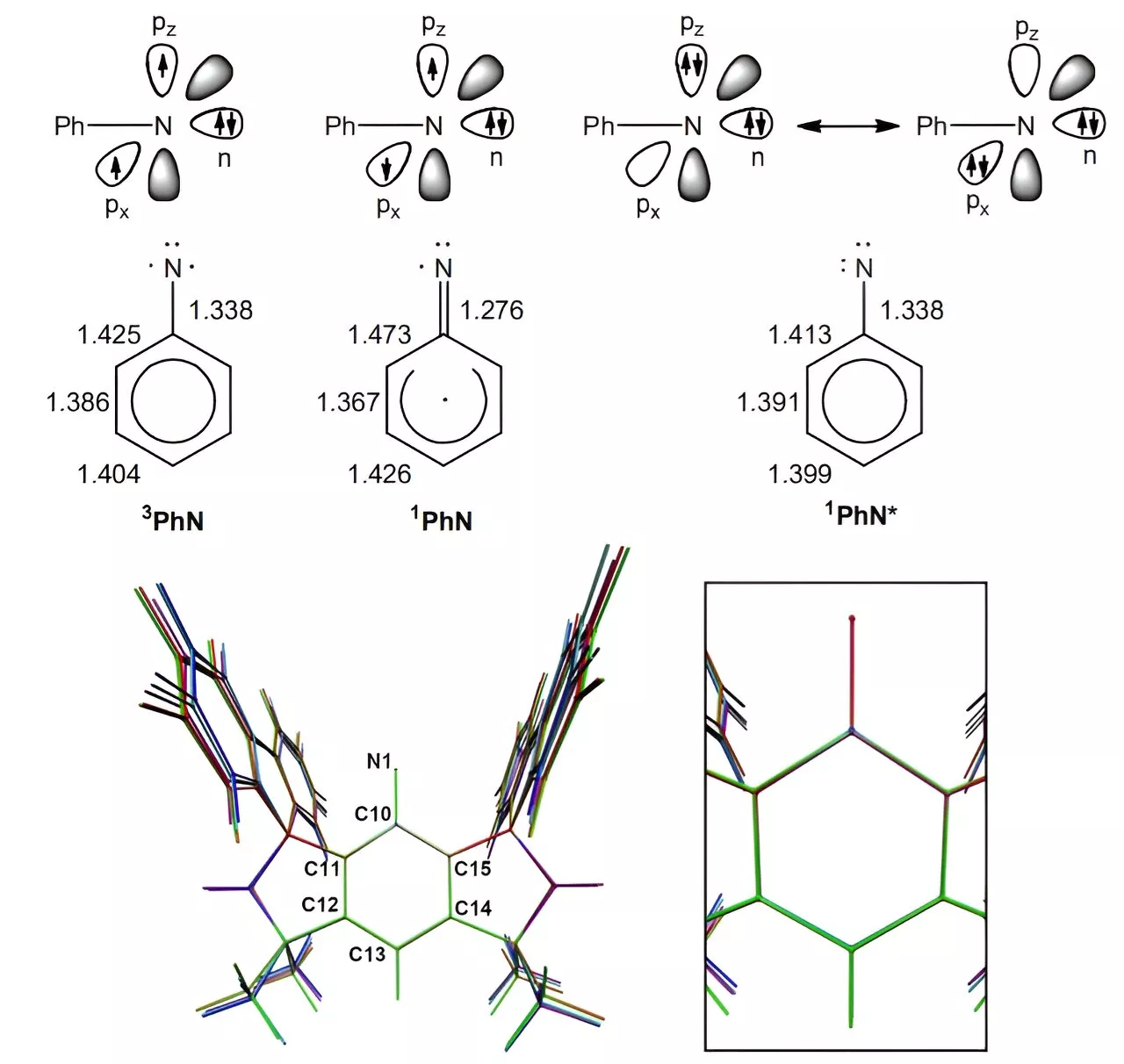Chemists have discovered a way to use visible light to synthesize a class of compounds particularly well suited for use in pharmaceuticals. The class of compounds, called azetidines, had been previously identified as a good candidate to build therapeutic drugs, but the compounds are difficult to produce in chemical reactions.
Now, a team has developed a method to produce a specific class of azetidines called monocyclic azetidines using visible light and a photocatalyst.
"The ring systems can break down in the body after a patient has ingested a therapeutic drug. Because the compound can be metabolized by the human body, what you give initially to a patient may not necessarily be what you would find in the body after the patient has taken it, and that is a problem." In the reaction, the researchers used two classes of compounds called acyclic imines and alkenes, which are highly desirable as starting materials because they can be easily varied to produce different products, Wearing says. However, when you use light to excite the imine, the acyclic imine decays from the excited state before it can undergo the cycloaddition, Schindler says.
Her lab ran a computational analysis that found using specific classes of the imines and alkenes starting materials would facilitate a better match in energy between those starting materials, which lowered the barrier for reaction. They also analyzed what factors led to high yields of azetidines. "The synthesis of these azetidine compounds are examples to demonstrate that this synthetic methodology can be applied to make complicated molecules and medicine-like molecules," Yeh said.
Pharmaceuticals Allergy Gene Therapy Chemistry Inorganic Chemistry Optics Organic Chemistry
United States Latest News, United States Headlines
Similar News:You can also read news stories similar to this one that we have collected from other news sources.
 WSP: Driver caught using impressive dummy to evade fines while using HOV lanesA Washington State Patrol (WSP) trooper ticketed a man for driving in the High Occupancy Vehicle (HOV) lanes with a fake 'dummy' passenger.
WSP: Driver caught using impressive dummy to evade fines while using HOV lanesA Washington State Patrol (WSP) trooper ticketed a man for driving in the High Occupancy Vehicle (HOV) lanes with a fake 'dummy' passenger.
Read more »
 Chemists develop technique for extending nitrene reactions to three daysA team of chemists at the University of Bremen, in Germany has developed a new type of nitrene capable of slow reactions that can last for up to three days. Their paper is published in the journal Science.
Chemists develop technique for extending nitrene reactions to three daysA team of chemists at the University of Bremen, in Germany has developed a new type of nitrene capable of slow reactions that can last for up to three days. Their paper is published in the journal Science.
Read more »
 Chemists discover spontaneous nanoparticle formation in charged microdropletsA team of chemists at the Indian Institute of Technology Madras, working with a pair of colleagues from the Jawaharlal Nehru Center for Advanced Scientific Research, both in India, has found that particles of minerals sometimes break down spontaneously when immersed in charged microdroplets, leading to the formation of nanoparticles.
Chemists discover spontaneous nanoparticle formation in charged microdropletsA team of chemists at the Indian Institute of Technology Madras, working with a pair of colleagues from the Jawaharlal Nehru Center for Advanced Scientific Research, both in India, has found that particles of minerals sometimes break down spontaneously when immersed in charged microdroplets, leading to the formation of nanoparticles.
Read more »
 Chemists, curators and Chilkat weavers present findings on historic dye techniquesThe research aimed to understand and recreate the striking yellow, black and blue-green color palette used in this sacred fiber art.
Chemists, curators and Chilkat weavers present findings on historic dye techniquesThe research aimed to understand and recreate the striking yellow, black and blue-green color palette used in this sacred fiber art.
Read more »
 Chemists demonstrate heterogeneous catalysis for synthesis of complex moleculeA catalyst developed at LIKAT in Rostock opens up new avenues in the synthesis of fine chemicals for pharmaceuticals, agrochemicals and household chemicals, for example. Its effect is based on isolated copper atoms applied to a solid carrier material around which the reaction solution flows.
Chemists demonstrate heterogeneous catalysis for synthesis of complex moleculeA catalyst developed at LIKAT in Rostock opens up new avenues in the synthesis of fine chemicals for pharmaceuticals, agrochemicals and household chemicals, for example. Its effect is based on isolated copper atoms applied to a solid carrier material around which the reaction solution flows.
Read more »
 Chemists Discover How Platinum Catalysts Assemble and Disassemble ThemselvesScience, Space and Technology News 2024
Chemists Discover How Platinum Catalysts Assemble and Disassemble ThemselvesScience, Space and Technology News 2024
Read more »
